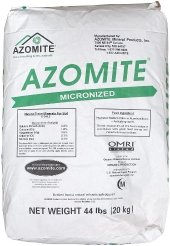I've read and heard a fair amount about it as high brix=high nutrition is pretty accepted even within synthetic ag/hort circles over here.
I like scientific validation of things, but I'm also pretty scientifically illiterate. Voila, I present... the refractometer. Sounds fiddly and expensive, but it's a really basic piece of relatively cheap kit.
I haven't taken the next step, but it will be getting a Reams soil test. I've had several lab tests before, but they've just told me what's in the soil, not what's actually available, which a Reams test does.
I'm not a fan of paying lots of cash to import lots of stuff, but from what I've read, sometimes it's gotta be done to get various micronutrients into the soil in the first place. In NZ, our soil tends to be low in various minerals.
I was talking to guy who knows his stuff the other day, and he said if you can add seaweed, that should return any depleted micros.
Basically, it's about creating and maintaining enough carbon and calcium, in balance with everything else.
Confused? Me too

I think a Reams test, a refractometer an a copy of 'teaming with microbes' is a great start.
Of course, there's zillions of people growing wonderful food without any of this stuff, but I do like numbers and graphs telling me my plants are as awesome as I think they are!



















 1
1

































